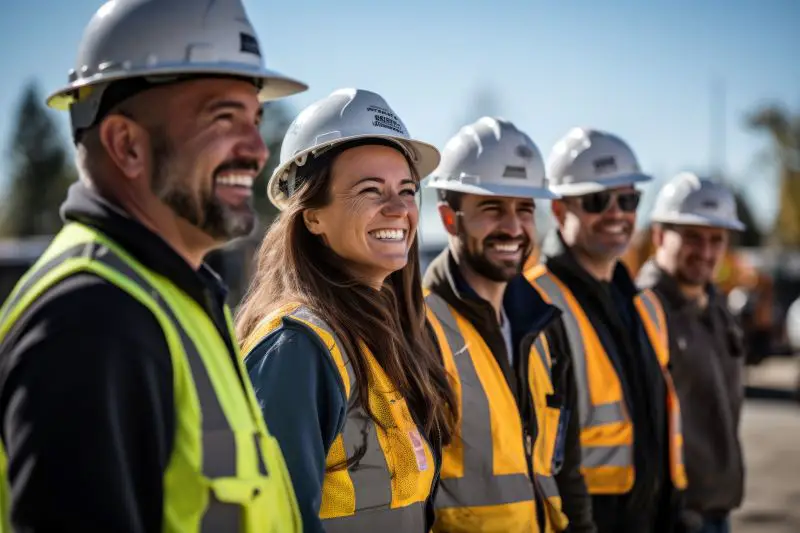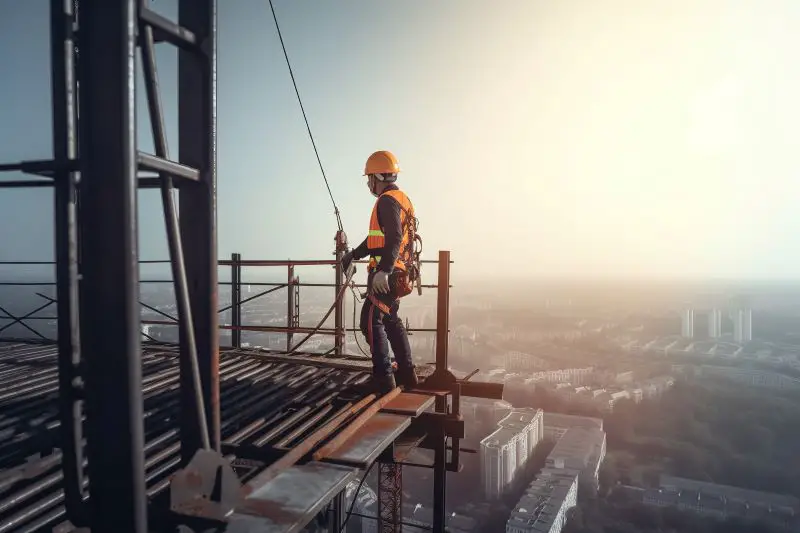Construction sites are inherently risky environments with potential hazards that threaten worker safety. From falls from heights to exposure to harmful chemicals, each day on a construction site presents the possibility of accidents with life-altering consequences.
Understanding the legal landscape surrounding these hazards is crucial for employers and employees. Employers are legally obligated to provide a safe work environment and implement safety protocols, as outlined in regulations like the PPE and scaffold law. In contrast, employees have the right to work in such an environment and report any safety concerns.
This blog post will serve as a guide, outlining the fundamental legal aspects of construction site hazards. It’ll explore the specific responsibilities of employers, the rights afforded to employees, and best practices for ensuring legal compliance and, more importantly, worker safety.
Types Of Construction Site Hazards

Construction sites buzz with activity, creating a dynamic environment crucial for project progress. However, within this constant motion lies a spectrum of threats that pose risks to worker safety. Recognizing these risks and employing successful mitigation strategies is essential to fostering a secure and efficient work environment. For comprehensive legal guidance on construction site safety and handling accidents, consulting with an experienced construction accident attorney is advisable.
Here are the three main categories of construction site hazards:
Physical Hazards:
- Slips, trips, and falls on the same level – Uneven surfaces, debris, inadequate lighting, and spills can all contribute to slips, trips, and falls on the ground level. These minor incidents can still lead to sprains, fractures, and other musculoskeletal injuries.
- Falls from height – This type remains the leading cause of fatalities in the construction industry, with 2% accounted for in the US alone. Working on scaffolding, roofs, ladders, and other elevated surfaces has an inherent risk of falls, resulting in severe injuries or even death.
- Trench collapses – Improper trenching techniques and failure to shore up walls can lead to trench collapses, burying workers under tons of earth and posing a significant risk of suffocation and crush injuries.
- Moving vehicles and equipment – The operation of forklifts, cranes, bulldozers, and other heavy machinery presents a constant risk of collisions and crushing injuries to workers on foot.
- Electrical hazards – Faulty wiring, exposed electrical components, and improper use of electrical equipment can lead to shocks, electrocution, and even fires.
Chemical hazards
- Exposure to hazardous materials – Construction workers may encounter a variety of dangerous materials, such as asbestos, lead, silica dust, and various chemicals used in paints, solvents, and adhesives. Experiencing these substances can lead to respiratory problems, skin irritation, cancer, and other health issues.
- Lead – This risk concerns renovation and demolition projects where older buildings containing lead paint may be present.
- Asbestos – This chemical is a highly carcinogenic mineral that can cause lung cancer and other serious health problems when inhaled.
- Silica dust – This substance is a common byproduct of cutting, grinding, and drilling concrete and other masonry materials.
Environmental Hazards
- Excessive heat and cold stress – Working in extreme temperatures can lead to heatstroke, hypothermia, and other heat-related illnesses. Proper hydration, acclimatization procedures, and breaks in shade are crucial for preventing these conditions.
- Poor air quality – Dust, fumes, and other airborne contaminants can irritate the respiratory system and exacerbate existing respiratory conditions. Proper ventilation and respiratory protection equipment are essential for maintaining good air quality on construction sites.
- Working in confined spaces – Confined spaces can pose various hazards, including oxygen depletion, toxic gas buildup, and the risk of being crushed or trapped.
- Biological hazards – Mold, bacteria, and other biological agents can be present in construction sites, particularly in older buildings or areas with moisture problems. Exposure to these agents can cause allergic reactions, respiratory problems, and other health issues.
By recognizing and understanding these various hazards, employers and workers can proactively mitigate risks and create a safer work environment for everyone.
Employer Responsibilities
The onus of safety on a construction site falls heavily on the shoulders of employers. They’re legally obligated to provide a safe work environment, and this responsibility encompasses several key areas:
- Implement and enforce comprehensive safety policies and procedures.
- Train workers in hazard identification, prevention, and safe work practices.
- Provide appropriate Personal Protective Equipment (PPE) and ensure its proper use.
- Conduct regular safety inspections and promptly address identified hazards.
- Report accidents and injuries to the appropriate authorities.
- Stay informed about and comply with all relevant safety regulations and standards.
Fulfilling these responsibilities upholds legal obligations and fosters a culture of safety awareness and shared responsibility on the construction site.
Employee Rights
Just as employers have responsibilities, workers also possess crucial rights safeguarding their well-being on construction sites. These rights empower them to participate actively in creating a secure work site:
- The right to a safe work environment
- The right to refuse unsafe work
- The right to report safety hazards and concerns without fear of retaliation
- The right to access safety training and information
- The right to workers’ compensation benefits in case of injuries
- The right to legal representation in case of safety violations or accidents
Understanding and exercising these rights empowers workers to become active participants in their safety and contribute to a safer work environment for everyone.
Best Practices For Legal Compliance
Here are some essential best practices:
- Develop and implement a comprehensive safety program – This program should outline safety policies, procedures, and protocols for all aspects of work on the site.
- Regularly review and update safety policies and procedures – Conduct regular reviews and make necessary updates to ensure continued compliance.
- Conduct ongoing safety training for all workers – Equip your workforce with the knowledge and skills to identify hazards, follow safety procedures, and work safely.
- Encourage open communication about safety concerns – Foster a culture where workers feel comfortable reporting safety hazards and implement anonymous reporting systems if necessary.
- Investigate and address all safety incidents promptly –Thoroughly investigate every incident, no matter how minor, to identify root causes and implement corrective actions to prevent similar occurrences.
- Maintain accurate records of safety training, inspections, and incident reports – These records demonstrate your commitment to safety and can be invaluable in investigations or legal proceedings.
- Seek legal counsel when necessary – Consulting with legal professionals can help ensure your safety program and practices comply with all applicable regulations and standards.
Legal compliance is not just about avoiding penalties; it’s about creating a safe and healthy work environment for everyone on the construction site.
Conclusion
Ensuring safety on construction sites requires a collaborative effort guided by a clear understanding of legal obligations and best practices. By working together, stakeholders can transform construction sites into environments where safety reigns supreme, not as a mere legal obligation but as a shared commitment to the well-being of all.
